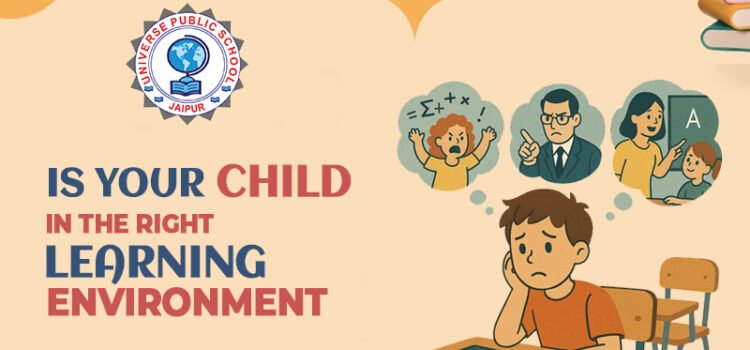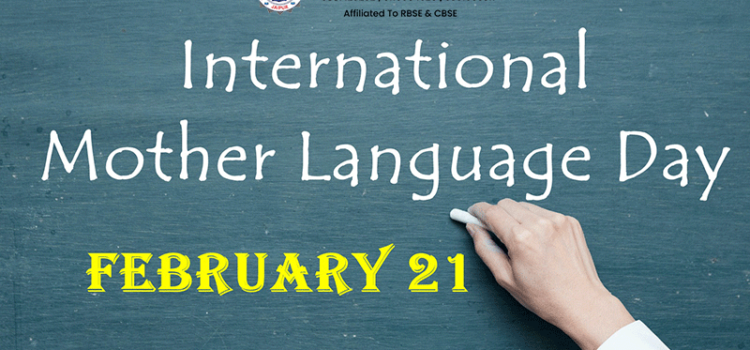Every parent wants the best for their child, especially when it comes to education. A child’s learning environment plays a key role in shaping their emotional well-being, academic success, and overall development. But how can you tell if your child is in the best school in Jaipur? It takes thorough observation and comprehension of your child’s needs to choose the best learning environment for them. Every child is unique and special, with different interests, learning styles, and emotional needs. While one child may thrive in a traditional classroom, another might need a more hands-on or creative setting to truly flourish. Are they excited to go to school? Do they feel supported, safe, and challenged in their current environment?
The right learning environment can make a world of difference in curiosity, building confidence, and a lifelong love for learning. At Universe Public School, we believe that every child deserves a learning environment where they feel supported, inspired, and understood. Our approach focuses on nurturing individual potential through a balanced mix of creativity, academics, values, and emotional growth.
We urge parents to consider whether their child is eager to learn, involved in class, and growing academically and socially. Our experienced educators, student-friendly atmosphere, and inclusive teaching methods aim to build a space where every child can flourish. If you are questioning whether your child is in the right environment, Universe Public School (CBSE School and RBSE School) offers the right guidance, infrastructure, and care to help your child grow into a confident and capable individual.
-
Engagement and Interest in Learning
The academic experience of a child is greatly influenced by their teachers. A child’s learning process can be substantially improved by a teacher-student relationship that is kind and encouraging. The best schools with experienced teachers guarantee that your child feels comfortable approaching them for help, receives constructive feedback, and feels motivated to ask questions. On the other hand, your child may not be in an encouraging atmosphere if they are hesitant to speak up in class, feel ignored, or do not get enough attention.
-
Positive Teacher-Student Relationship
Teachers play a key role in shaping a child’s academic experience. A child’s learning process can be substantially improved by a teacher-student relationship that is kind and encouraging. The top schools with knowledgeable instructors make sure your child is at ease asking for assistance, gets helpful criticism, and is inspired to ask questions. On the other hand, if your child is afraid to speak up in class, does not receive adequate attention, or feels neglected, it could mean the environment is not as supportive as it should be.
-
Academic and Emotional Growth
Both academic achievement and emotional health are promoted in a positive learning environment. Your child is in the proper place if they are learning new skills, getting better at subjects they used to struggle with, and becoming more confident in their abilities. On the other hand, if it’s too difficult without requisite support, they may feel discouraged and overwhelmed. A good learning environment motivates growth while ensuring your child doesn’t feel left behind.
At Universe Public School, we provide a supportive learning environment that supports not just academic growth but also emotional intelligence. Our strategy is centered on assisting kids in acquiring critical social skills, problem-solving techniques, and resilience in order to prepare them for the future. Every child should have a place where they feel secure, involved, and inspired to learn, in our opinion. If your child often experiences frustration, stress, or academic struggles despite their best efforts, it may be a sign that their current learning environment isn’t meeting their needs and obligations.
-
Social Interaction and Friendships
School is not just about academics, it’s also where kids learn foremost social skills. A positive and good learning environment provides opportunities for healthy interpersonal interactions, friendships, and teamwork. If your child enjoys spending time with classmates, is invited to social activities, and feels a sense of belonging, it’s a good sign that they are in a nurturing environment. However, if they frequently feel isolated, struggle to make friends, or experience bullying, the environment may not be conducive to their overall development.
-
Teaching Methods and Learning Style Compatibility
Each child learns differently; some learn best in engaging, hands-on environments, while others learn best in a regulated, independent environment. The right learning environment aligns with your child’s preferred learning style. It indicates that the teaching strategies are effective if your child is performing well and understanding the material. However, the teaching strategy may not be appropriate for their learning needs if they frequently have trouble understanding lessons, feel overburdened, or show discontent with the way subjects are presented.
Conclusion
Choosing or selecting the right environment for your child is one of the most important decisions you’ll make as a parent. You can tell if someone is in an environment that supports their success by observing their excitement, unique needs, mental health, balance of challenge and support, and overall advancement.
Remember, fostering a lifetime love of learning and assisting your child in realizing their full potential are more important than academic success in the correct environment. Never be afraid to talk to your child’s teachers or look into other possibilities if you see any indications that they aren’t doing well. After all, every child deserves a learning environment where they can shine.











